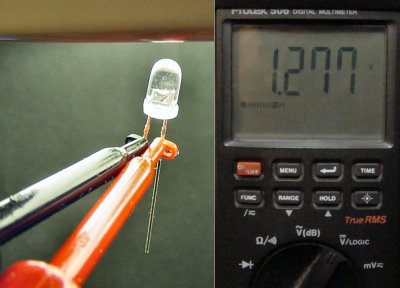This is a pretty interesting walk though on how to process and read the microvoltage that an LED will put out when exposed to a light source . Who says you can’t teach an old component new tricks?
“Hook up a high-quality ultra-bright red LED by itself (no battery or other circuitry) to a multimeter in voltage measurement mode. Put the LED against a light source, such as a desk lamp. See the voltage? Now, hide the LED in a dark place. See a decrease in voltage?”
Via Make


Permalink
Um, last I checked, All semiconductor materials are photo sensative. granted some
more than others. and your article only shows that it is light sensative, not
color sensative.
Permalink
Some interesting (human EE filtered) related reading when you’re planing on using a single led for digital communication between micro-controllers:
http://electronicdesign.com/Articles/Index.cfm?AD=1&ArticleID=15980
Hope it helps someone =)
Permalink
Hey Jeff,
The article shows how to do it for one color, simply make the same circuit 2 more times for the others (RGB – Red Green Blue)
“Putting this all together – a color sensor can be made from a reversed LED and an op amp chip. In fact, TAOS did just that with their TSLR257 (red), TSLG257 (green), and TSLB257 (blue) sensors.”
Permalink
Lawrence, your comment was removed. Please refrain from posting negative non-constructive comments. We appreciate all feedback, if there are certain types of articles you enjoy more than others please let us know. 🙂
Permalink
How much current does a regular led produce in direct sunlight? Is that reading there in mA?